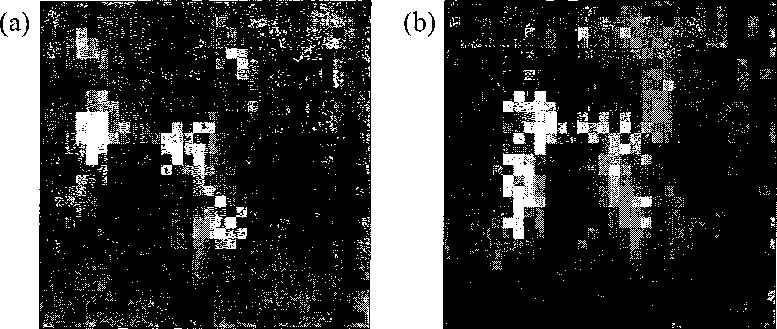28

Figure 3.4 : Image reconstruction results using (a) compressive phase retrieval (CPR)
with the full data set (4096 magnitude measurements), and (b) compressed sensing
phase retrieval (CSPR) with a subset of 1500 measurements from the data set used
in (a).
compressive phase retrieval (CPR), which uses the full Fourier amplitude dataset [69].
The same paper also describes a compressive sensing phase retrieval (CSPR) algo-
rithm which enables reconstruction with a subset of the Fourier amplitude samples.
R is particularly challenging for PR to reconstruct complex-valued images of objects
with a nonuniform phase profile. Therefore, we modify the original Fourier dataset
such that, when applying the CPR and CSPR algorithms, we assume that the illumi-
nating beam is a perfect plane wave. We first obtain the inverse Fourier image of the
object (magnitudes and phases) as in Figure 3.2(a) and (d) from the 4096 measure-
ments. Then, we keep the magnitude of this spatial image unaltered but remove its
phase using the background phase profile of the beam. The magnitude of the Fourier
transform of this phase-corrected spatial image is the input to our CPR and CSPR
algorithms. Figure 3.4(a) and (b) show the reconstruction results from CPR with the
full dataset and from CSPR with 1500 measurements respectively.
More intriguing information
1. Iconic memory or icon?2. The name is absent
3. The Importance of Global Shocks for National Policymakers: Rising Challenges for Central Banks
4. The name is absent
5. Centre for Longitudinal Studies
6. Fiscal Rules, Fiscal Institutions, and Fiscal Performance
7. Non-causality in Bivariate Binary Panel Data
8. Monopolistic Pricing in the Banking Industry: a Dynamic Model
9. WP 48 - Population ageing in the Netherlands: Demographic and financial arguments for a balanced approach
10. BUSINESS SUCCESS: WHAT FACTORS REALLY MATTER?